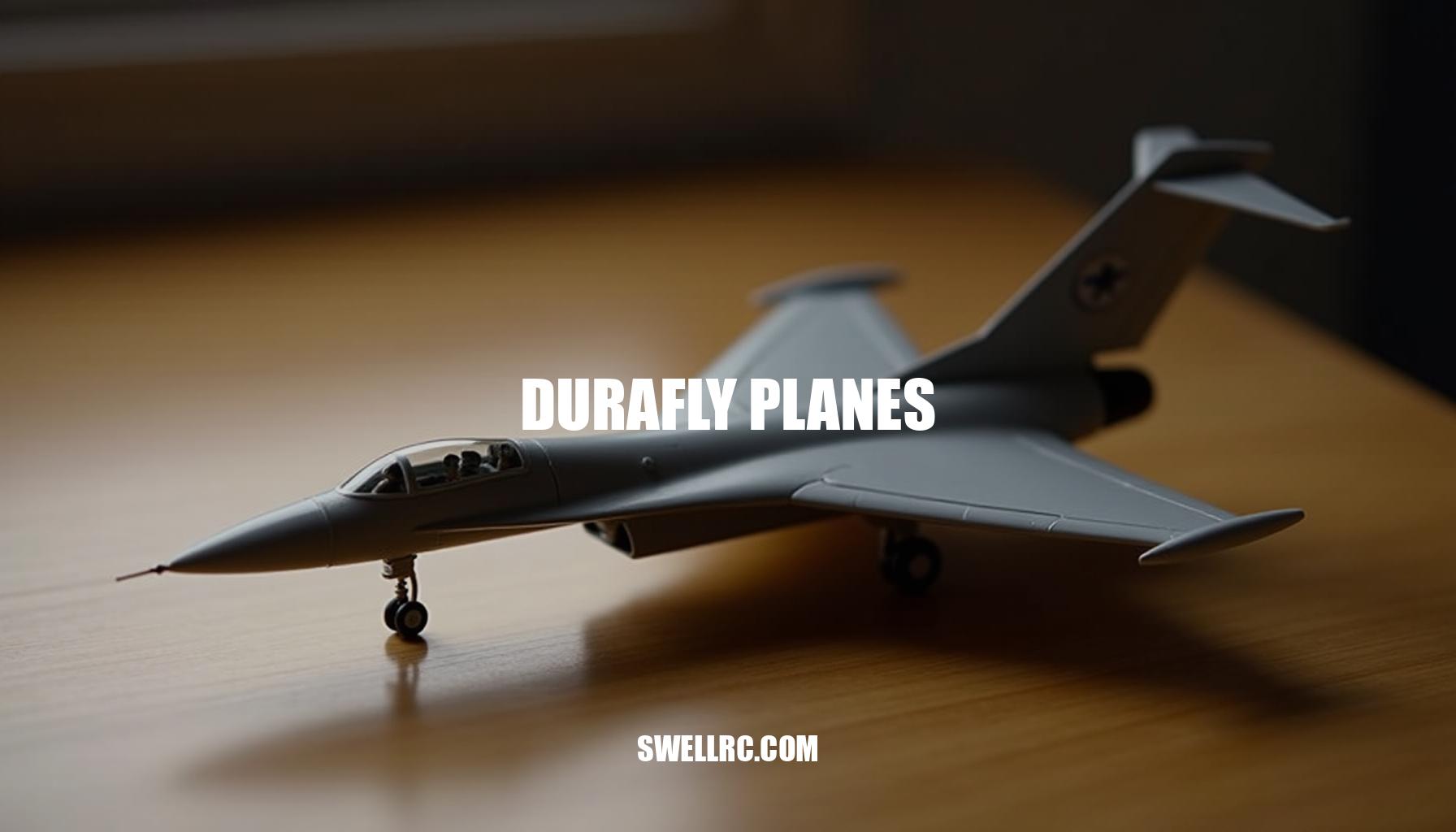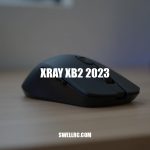Durafly Planes Review: A Balanced RC Experience
After spending a week immersed in dawn flights and late-night bench sessions, comparing every RC brand available, I stumbled onto Durafly planes. In the crowded field of high-spec foam warbirds and EDF jets from renowned names like Freewing, Durafly consistently emerged in conversations for its blend of smart design, approachable pricing, and real-world performance. The first time I watched a Durafly Tundra float up gracefully from a grass strip and grease the landing like a full-scale STOL, I knew I had to explore further.
In the competitive RC ecosystem—where brands like Freewing push the envelope on electric jets (see Freewing planes)—Durafly stood out as the line that made ambitious flying accessible without watering down the experience. This guide distills what I learned from building, flying, and tinkering with various foam RC aircraft so you can decide if Durafly fits your hangar and enhances your RC hobby. Whether you’re a beginner seeking beginner RC planes or an enthusiast chasing high-performance electric RC planes, Durafly planes offer a compelling balance of quality and value within the world of remote control airplanes.
The Story and Design Philosophy Behind Durafly
Durafly design is rooted in a mission to offer scale-inspired, feature-rich foam aircraft that are forgiving for beginners yet rewarding for seasoned pilots. Their commitment to quality is evident in their use of durable EPO foam planes, which provide resilience and lightness. A key advantage is their focus on modular RC aircraft construction, allowing for easy assembly and maintenance.
Durafly’s lineup features well-thought-out plug-and-fly models that minimize the guesswork often associated with RC flying.
From standardized hardware to practical hatches, the brand excels in delivering seamless user experiences. Many models include extras like flaps, lights, and float options right out of the box, catering to pilots seeking detailed scale authenticity.
When comparing ARF vs PNF options, Durafly strikes a balance by offering almost-ready-to-fly kits that benefit from precise CAD design and fast setup times, unlike the traditional balsa-heavy kits favored by brands like World Models. This approach streamlines the flying experience without compromising on RC plane craftsmanship or intricate scale RC details.
| Feature | Durafly | Traditional Balsa ARF | Premium Composite (e.g., CARF) |
|---|---|---|---|
| Material | Durable EPO foam | Balsa wood | Composite materials |
| Assembly | Modular, fast setup | Longer build times | Complex, composite-focused |
| Electronics | Plug-and-play | Varied, more manual | Advanced, tailored |
| Target Users | Everyday flyers | Woodworking enthusiasts | Large scale aerobatics |
In summary, Durafly’s design philosophy emphasizes innovation through details like clean wiring runs, well-chosen servos, and accessible battery bays.
Their flight characteristics are tuned to build pilot confidence from the very first toss, making them an ideal choice for hobbyists seeking quality, scale realism, and a straightforward path to progress.
Test Flights and Personal Performance Impressions
After countless hours at open fields, parks, and a lakeside float fly, three Durafly models told me most of what I needed to know about RC foam planes and brushless motor aircraft. The Durafly Tundra stands out as the quintessential go-everywhere bush plane with true STOL RC plane capabilities. Its big wheels, optional floats, and flaps that genuinely improve performance allow it to soak up rough strips and forgive ham-fisted inputs, making it ideal for newer pilots ready to grow.
The Durafly EFX Racer is a compact speedster delivering a locked-in feel with tight tracking when properly trimmed. It demands crisp launch techniques and throttle management, rewarding pilots with enhanced reflex training. On the other hand, the Durafly Spitfire is a charismatic warbird that shines when executing coordinated turns and managing energy respectfully.
It is honest and expects the pilot to truly fly the wing, offering a rewarding experience for intermediate flyers.
Durability across these brushless motor aircraft exceeded expectations. The EPO material takes knocks well, and foam-safe CA glue effectively fixes hangar rash. Hardware components hold up despite repeated wing removals.
Typical radio control ranges sit comfortably in the 400–1000 m band with quality 2.4 GHz gear in clean RF environments. For those seeking longer distances, long-range FPV setups are available (best long range FPV plane).
To provide further context, Volantex offers beginner-friendly resilient airframes and gliders (Volantex RC airplanes), whereas Black Horse focuses on wood ARFs with a different assembly process and flight feel (Black Horse RC planes).
| Model | Battery | Typical Flight Time | Control Range (Typical) | Difficulty |
|---|---|---|---|---|
| Durafly Tundra | 3S 2200–3000 mAh | 7–10 min | 400–1000 m on quality radios | Beginner to Intermediate |
| Durafly EFX Racer | 4S 1800–2200 mAh | 4–6 min | 400–800 m, keep LOS and altitude | Intermediate to Advanced |
| Durafly Spitfire | 3S/4S 2200–2600 mAh | 6–8 min | 400–800 m with solid link | Intermediate |
Numbers vary by prop choice, throttle discipline, wind, and all-up weight (AUW), but the overall pattern is clear: the Durafly Tundra is your confidence builder with dependable flight time and control range, the Durafly EFX Racer accelerates your piloting skills with its responsiveness, and the Durafly Spitfire offers a rewarding weekend showcase with its impressive handling. Each model complements different pilot levels and flight styles in the versatile world of RC foam planes and brushless motor aircraft.
Comparing Durafly to Leading RC Brands
When diving into the RC brand comparison, Durafly stands out as a well-rounded choice, balancing performance, price, accessibility, and customization. Let’s see how Durafly stacks up against key players like Dynam, Freewing, Esprit RC, and Aircraft International RC in various ownership aspects.
- Dynam offers budget-friendly foam warbirds and sport planes, appealing to tinkerers who enjoy upgrading their models. While Dynam often impresses with value, its electronics quality control can be hit-or-miss.
When comparing Durafly vs Dynam, Durafly typically provides a higher level of out-of-the-box reliability and scale detail.
- Freewing is the go-to brand for EDF jet enthusiasts, renowned for spectacular scale presence and powerful power systems. These models generally come at a premium price and require more demanding setup and field requirements. In a Durafly vs Freewing showdown, Durafly is more accessible to pilots seeking confidence-building aircraft, whereas Freewing attracts those chasing performance jets.
- Esprit RC is a premium-focused retailer and curator, specializing in top-tier gear, power solutions, and extensive support.
Ideal for hobbyists who prioritize superior components and service, Esprit RC planes often serve as the best option for those seeking to customize with high-end parts.
- Aircraft International RC serves as a resource and supply channel within the broader RC ecosystem. It’s invaluable for builders who appreciate having a broad pipeline of components, spares, and upgrade options, enhancing RC parts availability and facilitating RC customization.
Feature takeaways:
| Feature | Durafly | Dynam | Freewing | Esprit RC / Aircraft International |
|---|---|---|---|---|
| Materials | EPO blends durability and detail | Similar but often simpler | Scale complexity pushed | Excelling at high-end components sourcing |
| Power Systems | Well-matched out of the box | Adequate with room to upgrade | Potent EDF setups | Help you spec premium power |
| Support and Parts | Reasonably available | Varies | Robust for jets | Broad options & extensive supply |
In summary, Durafly appeals to pilots seeking a balance of scale aesthetics, reliable performance, and reasonable price. Dynam wings the budget-conscious flyer who loves upgrading, while Freewing remains the king for EDF jet thrills.
Esprit RC stands out for premium parts and expert support, with Aircraft International RC offering a comprehensive parts pipeline to keep your models flying. This well-rounded look at Durafly vs Dynam, Durafly vs Freewing, and other major brands should help you find the perfect fit for your RC flying style.
Choosing the Right Durafly Plane for Your Skill Level
When choosing beginner RC planes, it’s essential to match your model selection to your experience level, the size of your flying field, and your flying style. For those just starting out, the Durafly Tundra is an excellent choice. It handles well on grass, short strips, and light wind thanks to its flaps and big tires.
Its forgiving flight characteristics, visibility, and versatility make it perfect for newcomers.
Intermediate pilots looking to refine their skills should consider the Durafly EFX Racer. This model teaches crucial energy management and precision flying, best suited for larger fields where a spotter can assist. For advanced flyers who have mastered coordinated turns and smooth approaches, RC warbirds like the Durafly P-40 or Spitfire offer rewarding and authentic warbird handling experiences.
| Model | Skill Level | Approx. Cost Class | Battery Type | Typical Flight Time | Setup Ease |
|---|---|---|---|---|---|
| Tundra | Beginner | Mid | 3S 2200–3000 mAh | 7–10 min | Easy |
| EFX Racer | Intermediate | Mid | 4S 1800–2200 mAh | 4–6 min | Moderate |
| P-40/Spitfire | Advanced | Mid to Upper | 3S/4S 2200–2600 mAh | 6–8 min | Moderate |
If you’re aiming for higher-performance aerobatics down the line, the Great Planes Ultra Sport is a classic and reliable reference point known for stable and capable sport performance. For those seeking the pinnacle in precision and finish, large-scale composite brands like CARF set a high standard, giving you a clear vision of the “ultimate” in RC models.
RC buyer tips: Always confirm the availability of spare parts for your chosen airframe to keep your model flying longer. Check the battery bay size before ordering packs to ensure compatibility, and keep an extra prop and a set of control horns in your field box for quick repairs. Following these tips will help you enjoy your RC flying adventures to the fullest.
Maintenance, Customization, and Longevity Tips
A little care goes a long way with Durafly RC planes, especially when following a thoughtful routine that encompasses RC maintenance, proper battery storage, and smart RC plane upgrades. Here’s a simple roadmap to keep your model flying smoothly and reliably.
Pre-flight and care are essential starting points. Always inspect hinges, horns, and linkages thoroughly, adding a drop of foam-safe CA on metal-on-metal hardware to secure connections without damaging delicate EPO foam surfaces. Verify the CG and throws using your usual battery configuration, making sure to re-check these parameters after every modification.
Setting the correct control throws and exponential settings helps tame new models; for example, applying 25–35% expo on primary controls makes handling smoother. Balance your props carefully and perform an ESC calibration after any power component swaps. After flying sessions, wipe the foam clean, inspect for any dings or damage, and wick in some foam-safe CA into any cracks or minor EPO repair points to maintain integrity.
Smart upgrades can elevate your flying experience significantly. Consider installing metal-gear servos on high-stress control surfaces like ailerons and elevators, particularly for racers and warbirds where precision and durability matter most. Upgrading to a telemetry-capable receiver offers real-time monitoring of vital data such as pack voltage and RSSI, enhancing situational awareness.
Use quality props matched precisely to recommended motor and ESC specifications—avoid over-propping models like the EFX on 4S setups to maintain performance and safety. For bush plane enthusiasts, adding bigger tundra tires, a float kit, or LED navigation lights can improve orientation and versatility. Structurally, adding light carbon spar strips under the wing’s compression side reinforces strength if you boost power.
Battery maintenance is critical for safety and longevity. Store packs at about 3.8 volts per cell, avoid leaving them in hot environments like cars, label each pack by cycle count, and retire any puffed cells promptly to prevent failures. This careful battery storage strategy ensures consistent power delivery and extends the lifespan of your packs.
Durafly offers a robust parts ecosystem with spares reasonably available. Many accessories such as servos, horns, and wheels cross over with common ARF/PNF standards, simplifying replacements. Having traditional balsa hardware knowledge—similar to classic kits from well-known brands like World Models—is advantageous for customization beyond the manual.
Keeping a small bin of pushrods, clevises, and nylon hardware handy will keep you flight-ready and able to handle unexpected repairs efficiently.
Conclusion: Why Durafly Stands Out in My RC Journey
After flying and wrenching on a mix of Durafly models, what sticks with me is the brand’s unique balance: confidence-building flight manners, thoughtful scale details, and hardware that endures real weekend adventures. The Tundra makes short strips feel huge, the EFX sharpens your inputs, and the warbirds deliver the emotional payoff that keeps the hobby addictive. This blend perfectly captures Durafly value — providing an accessible RC planes experience without compromising on quality.
Comparing Durafly against premium ecosystems—spending time with high-end gear from brands like Esprit or admiring the precision CARF chases—actually clarified Durafly’s distinctive lane for me. It’s the sweet spot where ambition meets practicality, reflecting well on the entire RC brand reflection landscape. Here’s why Durafly stands out:
- Performance vs price: Exceptional flight characteristics that don’t break the bank.
- Durability: Hardware designed to survive real-world flying conditions over multiple weekends.
- Growth friendly: Models that evolve with your skill level, supporting long-term hobby growth.
- Joy per battery: Consistent enjoyment maximizing your RC flying experience.
If you’re chasing an accessible yet rewarding RC experience, Durafly is easy to recommend—and even easier to keep flying as your expertise blossoms.
Frequently Asked Questions
- What makes Durafly planes stand out from other RC aircraft brands?
Durafly blends robust EPO foam construction with well-matched electronics and real functional features—like effective flaps, reinforced spars, and sensible hardware—at approachable prices. Their models are tuned for confidence and progression, so you get engaging performance without a steep setup curve. - Are Durafly planes suitable for new RC pilots?
Yes. The Tundra is especially beginner-friendly thanks to its stable wing, big tires, and flaps that slow things down for graceful landings. Start with conservative control throws and a 3S 2200–3000 mAh pack, and add features (floats, lights) as you grow. - How fast do Durafly electric planes fly?
Most sport and trainer-style Durafly models cruise in the 40–60 mph range. The EFX Racer can approach or exceed 90–100 mph on 4S with the right prop and setup. Warbirds like the Spitfire or P-40 typically fly comfortably around 60–80 mph depending on weight and prop choice. - Which Durafly models are the most popular?
The Tundra (for versatility and STOL fun), the EFX Racer (for speed and precision), and classic warbirds like the Spitfire and P-40 (for scale appeal) are consistently popular due to their mix of features, performance, and parts availability. - Where can I find accessories and spare parts for Durafly RC planes?
Check reputable RC retailers and distributor partners, along with brand-specific parts listings. Many consumables—servos, props, wheels—are standardized and interchangeable. Community groups also share 3D-print files for small fairings, hatches, and cosmetic pieces. - How do Durafly planes compare to Freewing or Dynam models?
Durafly focuses on balanced PNF foam planes with forgiving flight manners and solid value. Freewing specializes in EDF jets with higher complexity and cost but spectacular performance. Dynam targets budget-friendly foam airframes that may benefit from user upgrades to electronics or hardware.



